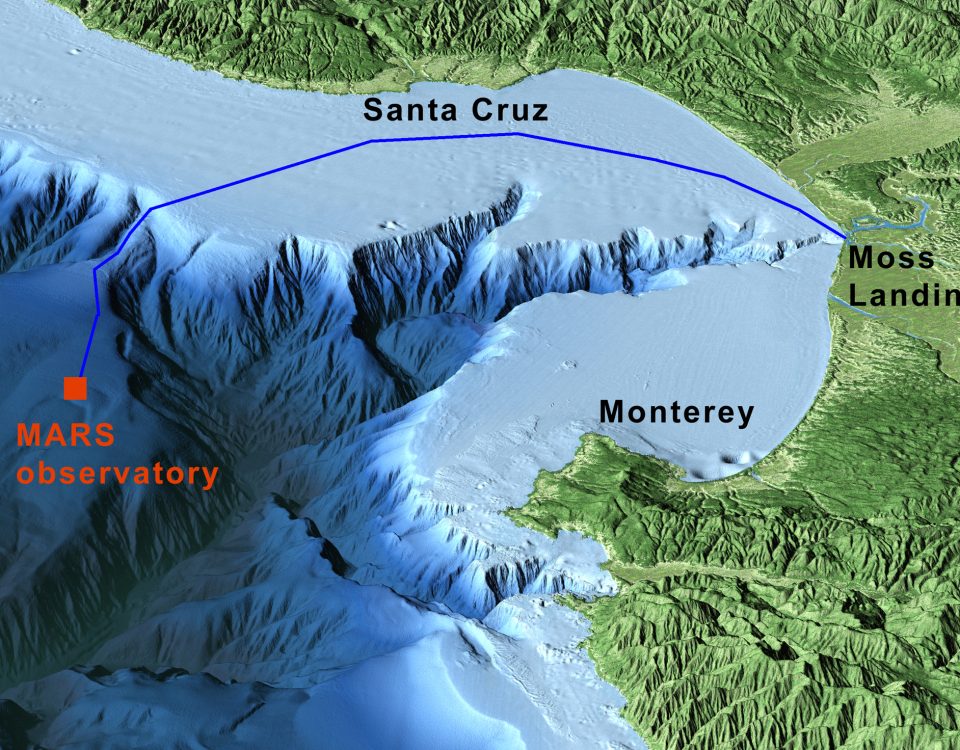
Summer In Monterey Bay: Humpbacks, Blue Whales And More
March 20, 2019
Moss Landing is the Best Place to See Whales in Monterey Bay/ Santa Cruz Areas!
May 19, 2020A burst of sea spray erupts into the sky as a humpback whale surfaces to draw breath into its enormous lungs. Sooty shearwaters gracefully skim the ocean swells, their wings beating mere inches above the water. An elusive leatherback sea turtle pokes its snout out of the water, gulping air before diving back down in pursuit of its jellyfish prey. These BBC-worthy moments were a common sight this summer as charismatic creatures returned to Monterey Bay – Seasonal Ocean Travelers Monterey Bay.
“With its cold, deep water teeming with food, Monterey Bay is a welcomed rest stop for these ocean wanderers.”
As summer heats up, winds blowing parallel to shore help push the surface layer of water away from land. Cold, nutrient-rich water from the depths of the Monterey submarine canyon rise up to take its place. This upwelling process brings blooms of phytoplankton to the surface–providing a feast for krill and small schooling fish. They, in turn, attract an array of marine animals; from small seabirds to massive whales.
“Humpback whales are champion travelers, with the farthest migration routes of any mammal.”
Humpbacks trek to Monterey Bay from their tropical breeding grounds of Baja and Central America. As whale food is scarce in warm water, the humpbacks must rely on thick blubber reserves to get them through the migration. Needless to say, humpbacks arrive in Monterey hungry and ready to feast.
These enormous tourists stay in the Bay from April through October. They mostly feed on anchovies, which swim in immense shoals hundreds of feet wide. Humpbacks lunge-feed through the water, eating over a ton of fish every day. It’s essential for the humpbacks to pack on as many pounds as possible before their next journey. In the meantime it provides eager whale watchers the chance to see these magnificent animals lunge-feeding, breaching, and cruising through Monterey Bay.
In terms of going the distance, sooty shearwaters could give humpback whales a run for their money. They embark on one of the longest migrations of any bird on earth, traveling almost 40,000 miles every year.
“Like humpbacks, shearwaters must travel from their warm breeding grounds to more food-abundant waters.”
Large colonies of shearwaters gather in New Zealand to mate and lay eggs safely in underground burrows. Once their chicks are ready to take flight in late spring, they head off over the Pacific. Shearwaters travel swiftly over the equator, traveling 620 miles in a single day. They rarely stop for snack breaks; instead they strive to reach bountiful feeding grounds as quickly as possible. A tracking study by UC Santa Cruz showed that the shearwaters tended to favor one of three feeding hot spots in California, Alaska, and Japan.
These incredible ocean travelers are fairly easy to spot out on Monterey Bay. Small and dusky gray with a flash of white underneath their wings, sooty shearwaters glide gracefully over heaving waves. They spend the summer in the Bay, feeding on its abundant krill, fish, and squid. Shearwaters either pluck food from the surface or plunge-dive into the sea. Using their wings to “swim” underwater, sooty shearwaters can dive up to 200 feet beneath the waves. Unfortunately these small but mighty seabirds don’t stay too long. The sooties return to New Zealand in October, along with the other flocks across the Pacific. After all, they do have an impressive migratory reputation to uphold.
“One of the rarest animals to spot in Monterey Bay is yet another migration master.”
Like the shearwaters and humpbacks, these dinosaur-like animals travel thousands of miles to reach their Californian foraging grounds. Reaching up to 6 feet in length and weighing over 550 pounds, this impressive but cagey creature spends its time in the Bay diving into deep, cold water in search of its jellyfish prey.
It’s the leatherback sea turtle, the largest turtle species on earth–and perhaps one of the most unique. Leatherbacks are built for speed and survival in frigid water. In place of the usual bony plates, the leatherbacks’ distinctive streamlined shell is covered with rubbery skin. Unlike most reptiles, leatherbacks not cold-blooded. They can maintain a warm core temperature without needing to sun themselves. Instead, thick layers of fat and enormous sizes keep the turtles from losing precious body heat. The leatherbacks muscles also generate heat as they are used; acting as the turtle’s own personal generators. With these adaptations in its arsenal, it’s no surprise the leatherback migratory range is more expansive than any other sea turtle.
Another favorite of our seasonal ocean travelers Monterey Bay, is the Pacific leatherbacks visiting a long way from home. Starting at their tropical nesting grounds of the Western Pacific, the turtles embark on a 7,000 mile journey across the ocean. It takes them nearly a year to cross the Pacific’s expanse. Luckily for the turtles, Monterey Bay often provides an ample buffet of sea nettle jellyfish–one of their favorite meals.
“The leatherback is also a diving champion, able to reach nearly 4,200 feet while holding their breath for over an hour.”
These magnificent reptiles can be spotted by lucky observers from June till September. And while it’s not easy to see leatherbacks, it’s certainly not impossible.
Humpback whales lunging through the water with giant mouths agape, gulping thousands of fish at a time. Flocks of sooty shearwaters taking flight in blinding unison. The sleek black shell of a leatherback breaking the surface as the enormous turtle takes a breath of fresh air.
“Summers in Monterey Bay bring in some of the best ocean travelers on earth, displaying scenes worthy of a National Geographic documentary.”
Humans travel from equally impressive distances come to appreciate these animals in their natural habitat before the vanish once again into the open sea.
– Post by Kaitlin Brawley, Sea Goddess Naturalist
*Photo by John C Bruckman




